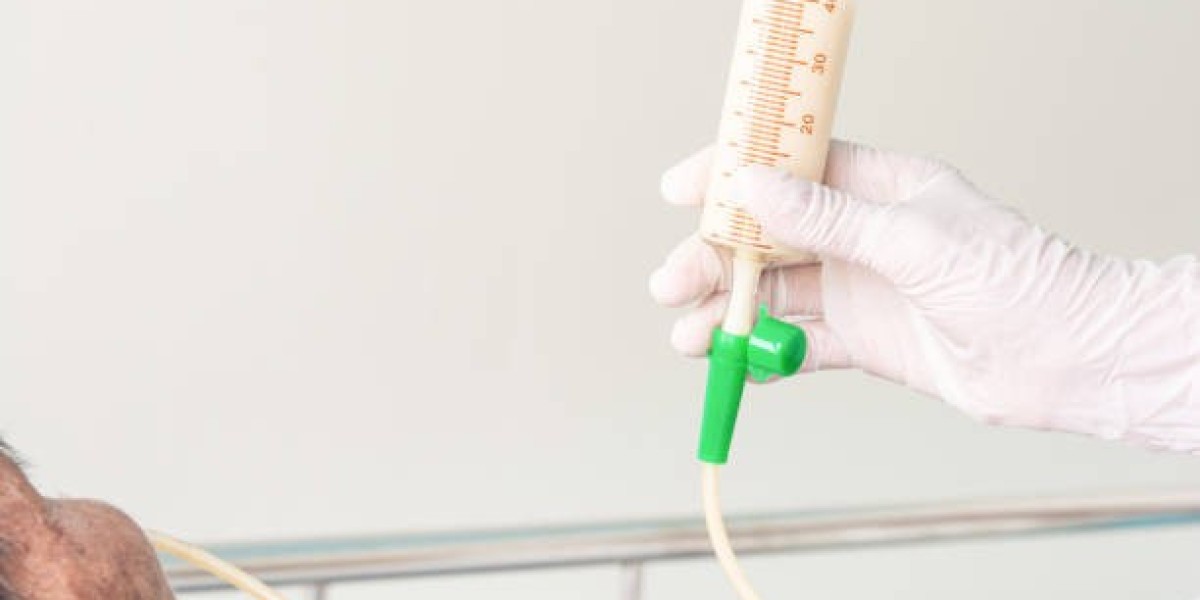Tube feeding is a vital lifesaving method for many patients who cannot take nutrition orally. However, one of the significant concerns for individuals receiving this form of nutrition is the risk of infection. Whether managed in a hospital or through professional services offering tube feeding at home in Dubai(التغذية الأنبوبية في المنزل في دبي), preventing infection is paramount to ensuring patient safety and wellbeing.
This article explores practical and essential steps to minimize infection risks and maintain a clean, safe tube feeding environment.
Understanding Infection Risks in Tube Feeding Patients:
Infections can arise from multiple sources related to tube feeding, including the feeding tube itself, formula contamination, or poor hygiene practices.
Common Infection Sources:
Contamination of feeding tubes or equipment
Improper hand hygiene during feeding preparation
Spoiled or improperly stored feeding formulas
Skin infections around the tube insertion site
Respiratory infections due to aspiration
Why Infection Prevention Is Crucial:
Infections can lead to serious complications such as sepsis, pneumonia, or prolonged hospital stays. Vulnerable patients, especially seniors and those with weakened immune systems, are at higher risk, making prevention efforts critical.
Key Practices to Prevent Infection in Tube Feeding Patients:
Adhering to strict hygiene and care routines is the best way to protect patients from infections.
1. Hand Hygiene Is Non-Negotiable:
Always wash hands thoroughly with soap and water before handling feeding equipment or feeding tubes.
Use alcohol-based hand sanitizers if soap and water are unavailable.
Encourage caregivers and family members to practice regular hand hygiene.
2. Proper Cleaning and Sterilization of Equipment:
Clean feeding syringes, tubes, and connectors with warm soapy water after each use.
Sterilize reusable feeding equipment regularly following medical guidelines.
Replace disposable parts as recommended to avoid buildup of bacteria.
3. Safe Preparation and Storage of Feeding Formulas:
Prepare formulas in a clean, sanitized environment.
Use freshly prepared formula or ensure proper refrigeration.
Discard unused formula after recommended time frames to prevent bacterial growth.
4. Maintain Cleanliness Around the Tube Site:
Inspect the insertion site daily for redness, swelling, or discharge.
Clean the skin gently with antiseptic wipes or as advised by healthcare providers.
Avoid excessive moisture that can encourage infection.
5. Practice Proper Feeding Techniques:
Use sterile equipment and fresh gloves when administering feedings if required.
Avoid touching the tip of feeding tubes or syringes that come in contact with formula.
Flush feeding tubes with sterile water before and after feedings to prevent clogging and contamination.
Role of Caregivers in Infection Prevention:
Caregivers play a vital role in maintaining infection control at home.
Caregiver Responsibilities Include:
Following hygiene protocols rigorously.
Recognizing early signs of infection and seeking medical advice promptly.
Ensuring all equipment is cleaned and stored properly.
Keeping feeding areas organized and free from contaminants.
Environmental Factors and Infection Control:
Creating a safe and sanitary feeding environment helps reduce infection risk.
Important Environmental Tips:
Clean and disinfect feeding surfaces regularly.
Avoid exposure to pets and other potential sources of germs during feeding preparation.
Keep formula and equipment stored in clean, dry areas away from direct sunlight.
Signs of Infection to Watch For:
Early detection of infection allows for timely treatment.
Common Signs Include:
Redness, swelling, or pain at the tube insertion site
Unusual discharge or foul odor near the tube
Fever or chills in the patient
Increased coughing or respiratory difficulty
Unexplained fatigue or loss of appetite
When to Seek Medical Help:
If any signs of infection appear, prompt medical evaluation is essential.
Urgent Situations Include:
Rapid onset of fever or chills
Severe pain or swelling around the feeding tube
Signs of respiratory distress or pneumonia
Persistent redness or discharge unresponsive to basic care
Additional Tips for Long-Term Infection Prevention:
Long-term tube feeding patients require ongoing vigilance to minimize infection risks.
Maintenance Recommendations:
Schedule regular medical check-ups for tube site assessment.
Replace feeding tubes according to healthcare provider instructions.
Educate patients and caregivers on evolving infection control practices.
Use antimicrobial dressings or ointments if prescribed.
Benefits of Professional Support for Tube Feeding at Home:
Choosing professional home care services for tube feeding at home (التغذية الأنبوبية في المنزل)can improve infection control outcomes.
Advantages of Professional Care Include:
Expert training for caregivers in hygiene and feeding techniques.
Regular monitoring by healthcare professionals.
Access to sterile equipment and supplies.
Personalized infection prevention plans tailored to patient needs.
Conclusion:
Preventing infection is a crucial part of managing tube feeding patients, particularly in a home care setting. By adhering to strict hygiene protocols, using proper equipment cleaning methods, and monitoring for early signs of infection, caregivers and patients can significantly reduce infection risks.
Whether managing feeding at home independently or with professional assistance such as tube feeding at home in Dubai, prioritizing infection control will ensure safer feeding practices and better overall health outcomes.






